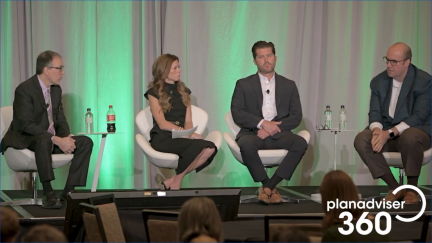Never miss a story — sign up for PLANADVISER newsletters to keep up on the latest retirement plan adviser news.
Form 5500 Data Shows Large Sponsors Favor TDFs to Boost Savings
Employer contributions and loans are also prevalent, a Brightscope/ICI report says.
Retirement plan sponsors are using a range of plan features and a diverse mix of investment options to encourage savings, a new report, The BrightScope/ICI Defined Contribution Plan Profile: A Close Look at 401(k) Plans, 2015, says.
Large plans have ramped up their target-date fund (TDF) offerings and most plans are automatically enrolling participants, offering employer contributions and making loans available, according to the report, created by BrightScope, a Strategic Insight company, and the Investment Company Institute (ICI). The report is based on an analysis of the Department of Labor’s (DOL’s) publication of Form 5500 data.
“One of the strengths of the 401(k) system is that it allows employers to customize their plans to meet the needs of their unique workforce,” says Sarah Holden, ICI’s senior director of retirement and investor research. “Employers use that flexibility to offer features that can encourage participation. Employer contributions, auto enrollment, loans and diverse investment options—including target-date funds—can make it easier for participants to plan and save.”
Eighty percent of plans offered TDFs in 2015, up from 32% in 2006. In 2015, the average large 401(k) plan offered 29 investment options, of which about 14 were equity funds, three were bond funds and eight were TDFs.
The analysis also found that 90% of large plans had employer contributions. Among plans with $1 million to $10 million in plan assets, 80% had employer contributions. More than half of plans with more than $100 million in plan assets automatically enrolled participants. Among plans with more than $1 billion in plan assets, 60% used automatic enrollment. However, for plans in the $1 million to $10 million range, only 20% used auto enrollment.
Overall, 82% of plans of all sizes had participant loans outstanding in 2015. For plans with more than $50 million in plan assets, more than 90% had participant loans outstanding.
In 2015, the average total plan cost was 88 basis points down from 1.02% in 2009.
BrightScope/ICI’s full report can be viewed here.
You Might Also Like:

Managed Accounts, TDFs or Both?

Employees, Employers Disclose Major Gaps in Retirement Awareness

IBM Faces ERISA Case Over TDF Performance
« IRS Issues Guidance Regarding 403(b) Plan RMDs and Missing Participants